Four tips for making more progress in training
I sometimes wonder if there’s a better and faster way to improve yourself as a dressage rider.
Can you, for example, improve your posture in a faster way? Or improve your seat by simply implementing a few tips?
These questions led to a search about how we learn and how our brain processes information. I was happy to find out there are indeed simple tips you can apply to improve your riding. But before I share these tips, I first want to briefly explain how your brain works when you are riding.
What is going on in your brain?
First of all, there are billions of neurons our brain.
You could say that ‘branches’ grow from these neurons, which we call dendrites. These dendrites grow with new dendrites sprouting from existing dendrites as we learn and develop our skills.
So when you are improving your skills as a rider, dendrites are growing in your brain.
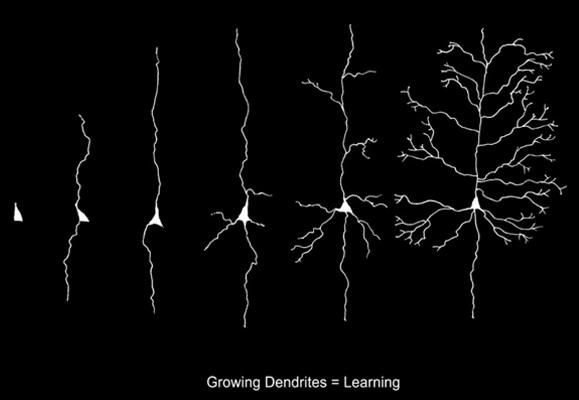
When dendrites of different neurons get close to each other, they can form a bridge between each other. At this point, the neurons are connected and signals can be passed on from one neuron to the other.
How does this relate to you as a rider?
Perhaps you now start to understand how you can give a certain aid or ride a certain exercise. You start to get the aha-moments.
At first, it feels uneasy
We all know that when we start practicing something new, at first it will feel uneasy. It probably won’t really go the way you want it to go or you lose that good feeling you were having.
But the more you practice, the better it will become.
In your brain the following happens. The dendrites, which are growing and forming bridges with other dendrites, are now starting to become thicker. The dendrites are developing a special coating to transfer information faster.
You now start to be able to respond faster when riding and it becomes easier to decide on what aids to give.
If you practice a little bit more, dendrites are forming double connections, which make them even stronger! Now you can process information even faster.
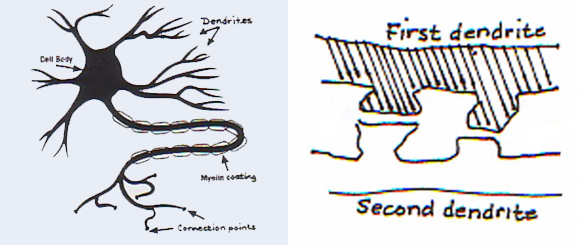
These dendrites will stay around longer and that means that what you’ve practiced has become part of your skill set. You now own that specific skill. You don’t even have to think about it anymore. When you’re giving that specific aid, it happens automatically.
Four tips
So how does this relate to improving yourself as a rider? How can we use this information to our advantage?
In order to improve yourself, the transfer of information in your brain has to go as smooth as possible. There are several factors that improve the transfer of information, but there are also factors that can slow it down.
I mention four factors below.
We all know that when we start practicing something new, at first it will feel uneasy. But as we practice, dendrites will grow and become stronger. Thus making it easier to transfer information and to do what you have to do.
1. Avoid stress
When you’re training your horse and at the same time training yourself to become a better rider, it is of importance that you don’t feel insecure or feel stress. I know that sounds logical, but why is it so important?
Feelings of insecurity and stress trigger the production of certain hormones which block the bridges that are being formed between the different dendrites. This way the signals can’t be transferred properly from one neuron to the other.
As a result, you can’t think clearly and you can’t respond as quickly. At least not like you normally would.
Instead, when you feel self-confident and you have a positive mindset, substances are being produced that stimulate the transfer of information. One of these substances is for example dopamine.
The more positive you are and the better you feel when training, the better your brain can function.
And that can sometimes be difficult when you’re very ambitious and tough on yourself. Some riders can get very frustrated when they don’t perform well, but feeling frustrated only makes things worse.
2. Build from a solid foundation
Dendrites can only grow from existing dendrites. This means that you can only improve your skills when there’s a solid foundation. You can only learn when it’s built upon something you already know and a skill you’ve already mastered.
So make sure you don’t want to take steps that are too big. Of course, you have to get out of your comfort zone to improve yourself. It will feel uneasy in the beginning. That’s normal.
But if you go too far out of your comfort zone, there won’t be enough links with what you already know.
Dendrites can only grow from other dendrites. This means you can only improve yourself when there’s a solid foundation. You can only learn when it’s built upon something you already know and a skill you’ve already mastered.
You might recognize the situation where you’re in sitting trot and you’re trying to improve your seat. But at some point in time you just lose that good feeling and you feel like you just can’t sit properly anymore.
Instead of starting to squeeze your legs and holding the reins for support, it’s best to take one step back and build from a point that feels familiar.
3. Repetition, repetition and repetition
When you’re trying to improve, for example, the way you give an aid or to stay more relaxed in your body, the dendrite that is being formed is still very fragile.
It is that fragile that it can disappear within a few hours so you’re back where you started.
Often, you remember only 60 percent after 20 minutes and after 24 hours only 30 percent. However, if you practice again within 24 hours, 80% will stick. So it’s much more efficient to practice a new skill more often.
We only have one problem. We can’t train our horse multiple times a day but perhaps you have another horse or what about visualization?
It has been scientifically proven that visualization stimulates the same processes in your brain as when you practice in real life. You see, you brain can’t tell the difference between something that’s really happening and something that’s happening in your brain. It still makes dendrites grow and become stronger.
4. Let’s play a game!
Like I said before, the production of dopamine is very beneficial as it will improve the transfer of signals in your brain.
The good thing about this is that you can think more clearly, have a better concentration and be more motivated. Another advantage is that dopamine makes you feel happy. So you also enjoy the riding even more.
So, it’s clear that we want dopamine, but what triggers the production of dopamine?
Well, for example, dopamine is triggered by playing games.
Now that might sounds a bit weird in relation to your daily training. I mean, dressage is quite serious right?
But try to see if you can add an element of game playing to the training. For example, try to improve your skill between certain letters or be creative in where you’re riding your exercises.

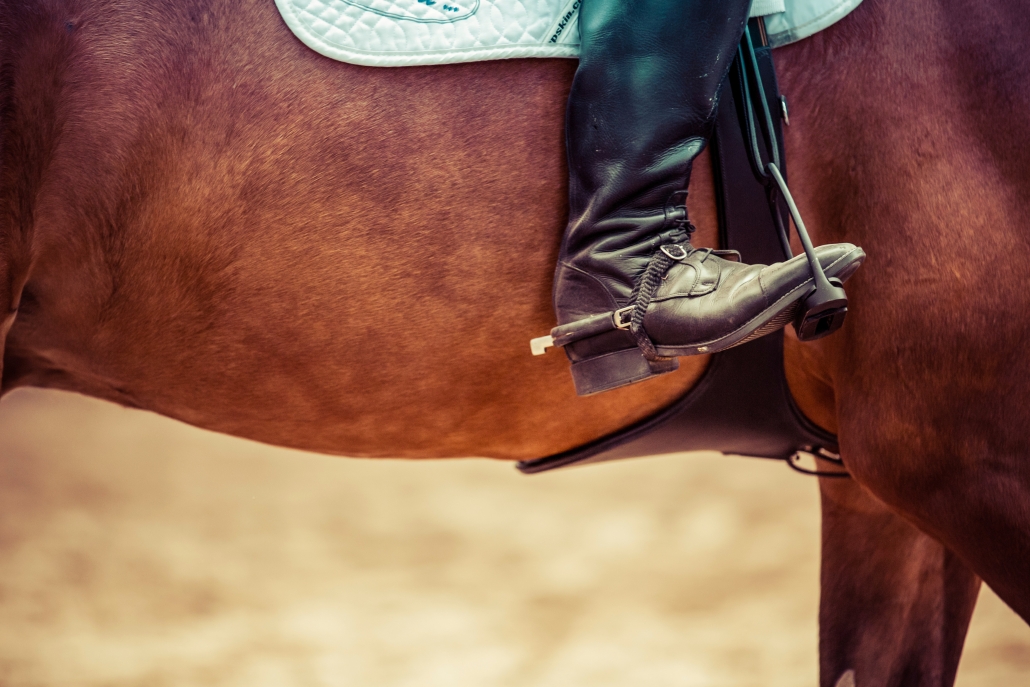
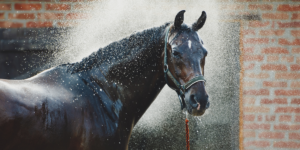
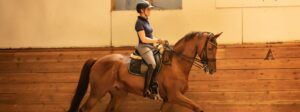

17 Responses
This makes complete sense!!! I am going to give this a go when I school my horse this evening
Great article Conny, and this really applies to MY horse!
Excellent insights! You guessed it. Stress is my biggest issue – my brain shuts down completely. Recognizing that fact, finding teaching programs that allow me to “replay” to reinforce learning, and committing to a written training plan will help me get me to my goal. Love you guys!
This is so interesting and builds on everything I am learning….can’t wait to really remember these great facts!
Thank you! I’m going to have to try “repetition, repetition, repetition” on this article, so I can absorb it all!
I enjoyed this article.Since I cannot ride everyday watching the videos and imagining I am the rider helps me to remember the aids when. I do get to practice.
I have been extra careful to keep the hands soft and no pressure on the rein but every now and then his head goes up.Help.
Hi Laura, whenever the head goes up, you can move your rein a bit to the inside (not backwards) and invite your horse again to accept the bit. Make sure you’re not forcing him into a certain frame. It’s easiest to do this on a circle. Hope it helps.
Great article Conny. Thank you.
Hi Conny my 5 year old is 17.1hh and finds it difficult to step under from behind so my seat comes off the saddle in the transitions – I am already trying the repetition repetition but it is slow going any other tips?
Hi Gerry, thanks for your comment and question! I’m assuming you mean the transition within the gait? If your horse lacks strength to be able to place more weight on the hindlegs, make sure you don’t ride the transitions too ‘big.’ Don’t go too far and make smaller transitions. Reining back can also help to activate the hind legs and get more weight on the hind legs. Good luck!
This is the best article I have ever read!
Wow thanks!! 🙂
Hi Conny,
Thank you! Once again you’ve hit the nail on the head! You give me tremendous inspiration!
Warm regards
Heather
Thank you heather-lee! 🙂
I find it helps when I have a playful and experimental quality to my riding. However this is hard to do consistently.
I appreciate how you mentioned that when you are feeling insecure or have stress being triggered when training yourself, you won’t be able to think clearly or respond as quickly as you normally would. Learning how to ride a horse is something that my wife and I would like to try out. Perhaps dressage training and working to keep insecurities to a minimum would be good ideas for starting to learn how to work with horses.